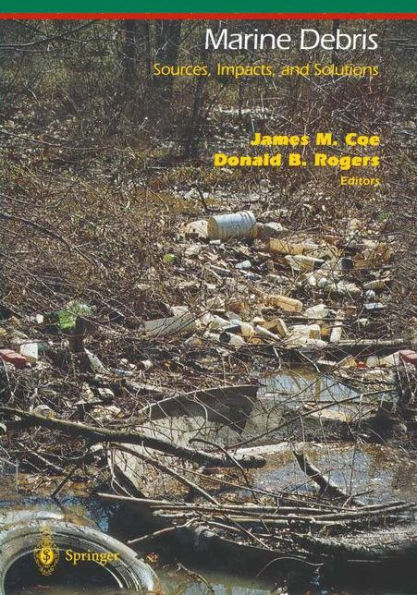Table of Contents
I The Status of Marine Debris.- Section I. Amounts, Types, and Distribution.- 1. Debris in the Mediterranean Sea: Types, Quantities, and Behavior.- 2. Distribution of Floating Debris in the North Pacific Ocean: Sighting Surveys 1986–1991.- 3. Marine Debris in the Caribbean Region.- 4. Distribution, Type, Accumulation, and Source of Marine Debris in the United States, 1989–1993.- 5. Pelagic Plastics and Other Seaborne Persistent Synthetic Debris: A Review of Southern Hemisphere Perspectives.- SECTION II. Biological Impacts.- 6. The Highest Global Concentrations and Increased Abundance of Oceanic Plastic Debris in the North Pacific: Evidence from Seabirds.- 7. Encrusters, Epibionts, and Other Biota Associated with Pelagic Plastics: A Review of Biogeographical, Environmental, and Conservation Issues.- 8. Impacts of Marine Debris: Entanglement of Marine Life in Marine Debris Including a Comprehensive List of Species with Entanglement and Ingestion Records.- 9. Ghost-Fishing Gear: Have Fishing Practices During the Past Few Years Reduced the Impact?.- II The Sources and Solutions to the Marine Debris Dilemma.- SECTION III. The Socioeconomics of Marine Debris.- 10. A Socioeconomic Theory for Controlling Marine Debris: Is Moral Suasion a Reliable Policy Tool?.- 11. Marine Debris: Benefits, Costs, and Choices.- 12. The Economic Value of Controlling Marine Debris.- 13. A Comprehensive Waste Management Model for Marine Debris.- SECTION IV. Considering the Maritime Sources of Debris.- 14. Shipping and Marine Debris in the Wider Caribbean: Answering a Difficult Challenge.- 15. The Challenges of Ship-Generated Garbage in the Caribbean.- 16. MARPOL Annex V, Commercial Ships, and Port Reception Facilities: Making It Work.- 17. Comparison of MARPOL Annex V Port Reception Facilitiesfor Garbage in the U.S. Gulf of Mexico and the United Kingdom.- 18. Waste Disposal Practices of Fishing Vessels: Canada’s East Coast, 1990–1991.- 19. Dealing with Ship-Generated Plastics Waste on U.S. Navy Surface Ships.- 20. Recreational Boaters and Marine Debris: How We Can Effectively Reduce Littering.- 21. A Strategy to Reduce, Control, and Minimize Vessel-Source Marine Debris.- SECTION V. Considering the Land-Based Sources of Debris.- 22. Legal Regulation of Upland Discharges of Marine Debris: From Local to Global Controls and Back.- 23. Comparison of the Results of Two EPA Marine Debris Studies.- 24. New York and New Jersey Beaches: “It Was a Very Good Year”.- 25. Sources of Plastic Pellets in the Aquatic Environment.- 26. Implementation and Assessment of a Floatables Action Plan for the New York-New Jersey Harbor Complex.- 27. The Control of Floating Debris in an Urban River.- 28. Linkages Between Land-Based Sources of Pollution and Marine Debris.- 29. Upland Sources of Marine Debris on the Shorelines of Puerto Rico.- 30. Land-Based Sources of Marine Debris and Contamination of the Coastal Areas of the Caribbean Islands of St. Lucia, Dominica, and the British Virgin Islands.- 31. Strategies to Reduce, Control, and Minimize Land-Source Marine Debris.- Literature Cited.



